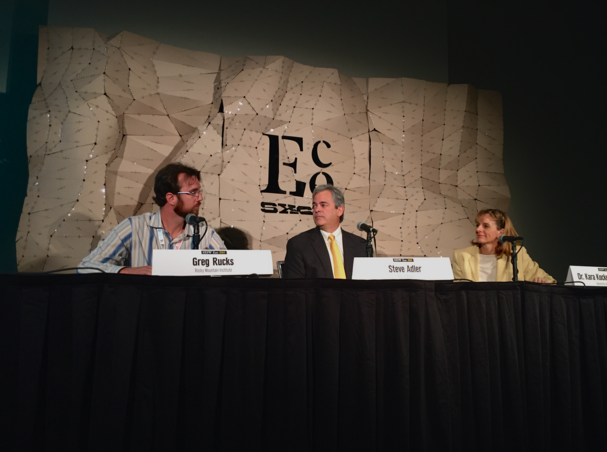Austin, Texas. As the 11th most populous city in the United States, the most bike-friendly city in Texas, and the Live Music Capital of the World, ATX has become one of the fastest growing metropolitan areas in the nation. The beautiful scenery and seemingly unlimited opportunities for adventure have made Austin the city of wonder it is today. Speaking during last week’s SXSW Eco conference, Mayor Steve Adler said of his town, “this is a magical place.”
Yet as many locals know all too well, the magic can quickly vanish after a drive through the city. Austin’s explosive growth, combined with limited room for expansion, has led to crowding within Texas’ capital. “We live in a city that is remarkably mobility-challenged,” admitted Adler. Congestion and stagnation of roadways have long been a part of the Austin experience — but should they? Frustration with traffic has resulted in a multitude of potential solutions. Such ideas include tollways, roadway expansion projects, and, perhaps most ambitious, a public rail system designed to link high-traffic areas of the Austin metropolitan area. But while the idea of an intracity railway has been brought to city officials on more than one occasion, little progress has been seen. Voters overwhelming rejected a rail proposal last year. Adler, too, remains wary. “We can’t build our way out,” he said. “We have to innovate our way out of congestion.”
Joined by Dr. Kara Kockelman (a University of Texas engineering professor) and Greg Rucks (of the Rocky Mountain Institute) Adler discussed what may be the solution to Austin’s transportation crisis – autonomous or self-driving vehicles. Made famous by companies like Google and Tesla Motors, the idea of self-driving vehicles might seem like a thing of the distant future. Yet just earlier this year, Google began testing its autonomous vehicles on Austin’s roadways. Concerned? You might not need to be. With automation comes decision-making and reaction times faster than any human driver could manage. “I think one of the biggest benefits are reductions in lives lost and crashes,” said Kockelman. “We’re expecting crash reductions on the order of 80 percent.”
Excited at the prospect of automation, Adler commended the technology for its potential to bring mobility to a wide range of Austinites. Beyond those who lack the patience to brave traffic, those most affected would include Austin’s elderly, unlicensed, and low-income citizens. Factoring in payments and insurance “the cost of operating a car is great,” said Adler.
With widespread automation, Kockelman hopes to see an increase in vehicle efficiency, a huge factor in environmental sustainability. With computerized driving systems, she estimates that efficiency could rise up to 20 percent, even higher if the movement for autonomous vehicles embraces electrification. Speaking on sourcing municipal energy, Kockelman told spectators she “would love to see the whole system shift away from coal.” Adler voiced his agreement, reminding their audience that Austin currently leads the way in solar purchases.
While estimates regarding the rollout of “autonomobiles” in Austin varied, each speaker agreed the first step was changing the way Austin looks at mobility. “Government and leaders have a job to move that way of thinking along,” said Adler. “You have to have courage and you have to have technology on your side.” Regardless of opinion, autonomy has arrived. It’s now up to Austinites to decide how innovation will affect their city’s future.



